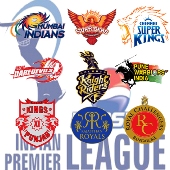 The sixth edition of the Indian Premier League got off to a flying start on Tuesday.
The sixth edition of the Indian Premier League got off to a flying start on Tuesday.
But away from the glitter, many industry experts had raised doubts over the T20 tournament’s effectiveness as a marketing platform.
But the overwhelming verdict still seems to be that IPL gives advertisers their money’s worth through better reach and recall.
Shailesh Kapoor, co-founder and CEO of media insights firm Ormax Media says, “The IPL format has definitely matured over the last six years.
"T20 has also emerged as a popular cricket format over these years, creating more format familiarity in turn.
"Team loyalty has built well over time for key franchises like Chennai, Mumbai and Kolkata. Building team loyalty will be the key if the format has to now reach its next level.”
Asked about the reason why so many advertisers still want to place their bet on IPL, Kapoor explains besides movie premieres and events, not too many shows or properties score 3+ TVR.
Further, IPL allows for extensive ground sponsorship, which is the equivalent of non-intrusive product placements.
“Over the last seasons, we have seen in our syndicated IPL research (Ormax Trac20) that Vodafone and Pepsi have clocked unaided recall scores in excess of 50 per cent, which can never be achieved through conventional advertising on general entertainment channels.
Also there is a lack of options that offer a combination of high TVR and product placement opportunities,” he adds.
Interestingly, reports suggest, that the sixth edition of IPL will rate better on TV compared to the 2012 edition.
As per IPL TV Rating Estimation Study, done by MEC, a media buying and planning agency and a founding partner of GroupM, and Meritus, WPP’s analytics company, the average TV rating for the league stage is expected to go up from 3.8 TVR last year to 3.9 TVR -- an increase of 2.6 per cent (15+ years, Male/Female, SEC ABC).
T Gangadhar, Managing Director, MEC India, says, “It is the best property for advertisers, giving an average TVR of 3.4 or more for 40-odd days. Comparing it with the past seasons is misplaced.
Advertisers also need to see what other options they have.
If
an advertiser has money and a reason to advertise in the season, it is the best property.
The reasons might be peak season for the brand (a beverage like Pepsi); a new launch for which it is seeking a reach; and/or a competitor’s pressure like in case of telcos, because if you are not there, somebody else will be.”
Whatever be the reason, the broadcaster, Multi Screen Media (MSM) is happy with IPL.
“This has been the best year for us.
"We have roped in maximum sponsors at 11, while 80 per cent of the inventory is sold. Since last week, we have increased the rates,” Rohit Gupta, president (network sales, licensing and telephony), MSM says.
By correcting ad rates this season, the broadcaster has not only gained in terms of ad volumes, it has also managed to get clients such as Godrej and Samsung back as sponsors.
The sponsors on board are PepsiCo and Vodafone (co-presenting sponsors), and Karbonn Tabs, Usha International, Godrej, Panasonic, Havells, Cadbury-Kraft, Samsung Mobiles, Tata Docomo and Parle Biscuits as associates.
The first season of IPL had clocked an average TVR of 5.39 but it started falling gradually. IPL 2011 garnered an average of 3.91 TVRs, which fell further to 3.27 TVR last year.
Another reason for the renewed interest in the sixth season has been the very high commitment shown by PepsiCo, which is investing not only in the title sponsorship of the tourney but has also partnered with eight out of the nine franchisees and has become the co-presenting sponsors.
Experts believe that for most of the brands, the involvement lies in the faith in IPL, which is a testament to the results that this extravaganza has delivered so far.
Anupam Vasudev, CMO, Aircel, says, “IPL is a three-month high profile event.
It creates a lot of consumer involvement. Though it is maturing, it continues to remain the biggest platform. We have been associated with Chennai Super Kings since the last six years.
It has been an interesting investment and we are very happy with it.”
While IPL remains the single-biggest impact window and is slowly on its way to become what a Super Bowl or an EPL is for key advertisers abroad, the biggest challenge for IPL will be to attract small advertisers if it has to grow in future, experts say.

 The sixth edition of the Indian Premier League got off to a flying start on Tuesday.
The sixth edition of the Indian Premier League got off to a flying start on Tuesday.